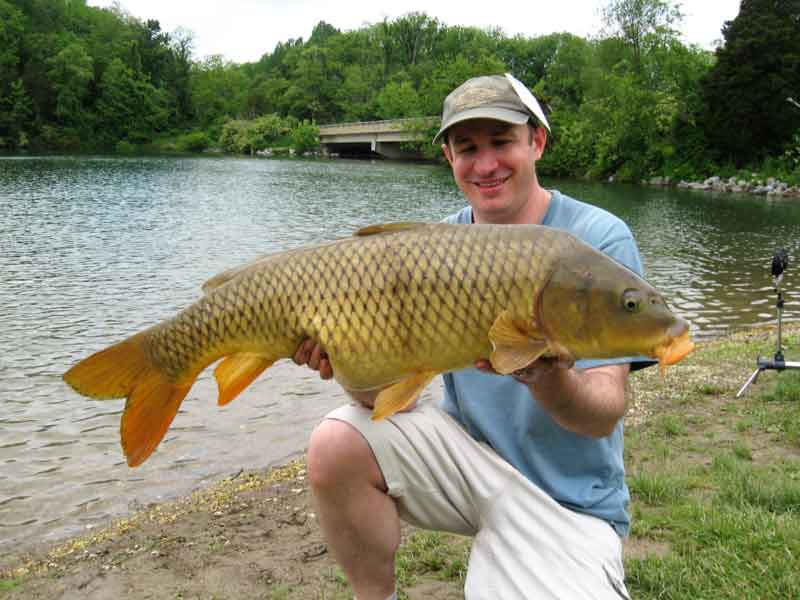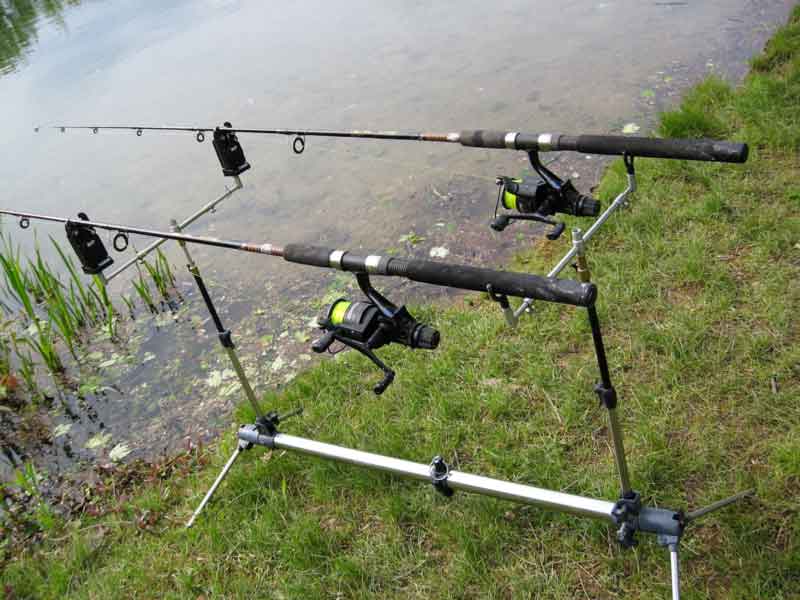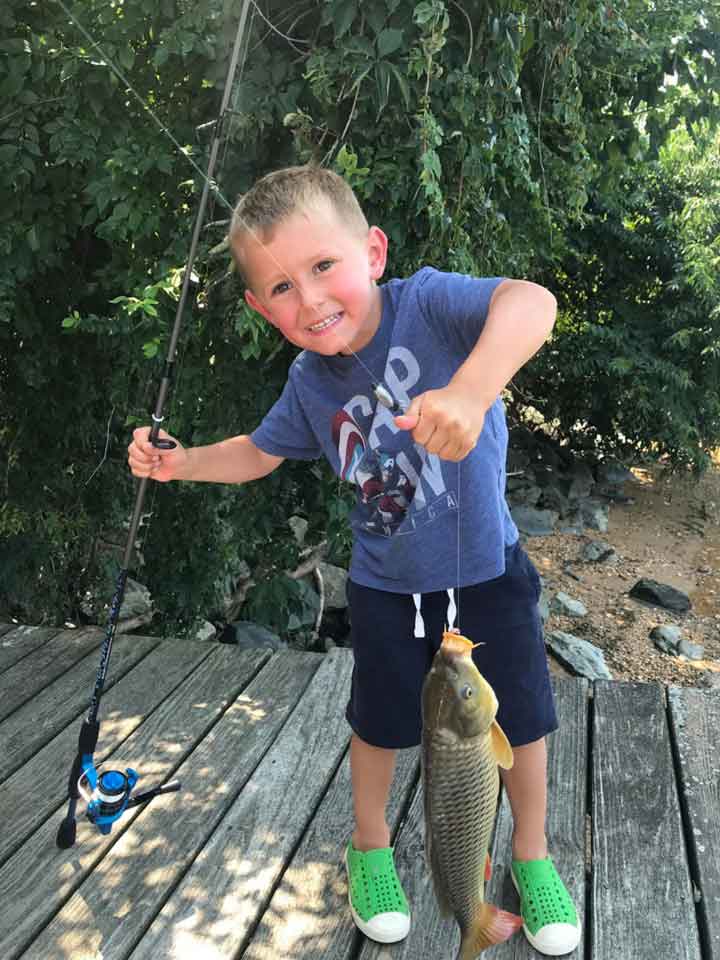Question: what species of fish is considered throughout much of the world to be one of the smartest, most challenging, largest freshwater fishing targets out there? A fish that anglers spend untold thousands of dollars and travel extensively, just to get a shot at a 30 to 40 pounder? One anglers are willing to bankroll almost their entire worth to purchase highly specialized gear and baits to consistently fool? Are we talking about muskies? Pike? Sturgeon?! Do you give up? Well folks, it’s actually the common carp, and several sub-species that abound both in the US and abroad.

Although routinely considered at the bottom rung on the gamefish ladder around here, or not even considered a gamefish, carp are indeed a very available fish that brings a lot to the table. True, carp are not ranked high in North American waters, where predators that jump high, look purdy, or have teeth rule the scene. But in their own special way they’re every bit as challenging and worthy as a gamefish. Besides, how else can the average angler find volumes of 20- to 30-pound class fish, in multiple bodies of water within a few hours drive or even less throughout much of the Mid-Atlantic region?
Personally I like carp, and I like them a lot. They’re big, strong fighters and they can be extremely spooky and skittish, offering unique challenges to the angler. One growing and popular way to catch them is with a fly rod, and most anglers I know who have caught them in this manner claim they are every bit as wary and selective as the trout species. Although they are primarily taken on a variety of corn, dough, or boilie baits, they will take a variety of lures. I have taken them on jigs, spinners, small crank baits, and some on the popular prepared trout dough and paste baits. I even caught one on a double-bladed spinnerbait years ago that smashed the lure with amazing force and challenged my fish-playing skills for a 30-minute gig. The loser went 25-pounds!
Carp Fishing Gear
As a kid growing up in central Maryland, I cut my teeth on carp fishing at the Baltimore reservoirs, Liberty in particular, simply by fishing shallow coves for them with my panfish gear of the 1960s. Ultra-light spinning tackle had yet to come onto the scene so the lightest rod I could use and six-pound test was good enough. We used number-four Eagle Claw hooks and baited them with nightcrawler chunks and pinched on some large split-shot about 20-inches above the hook for additional casting weight. Canned corn was broadcasted in the backs of shallow coves when the waters were low and then either the worm or the corn itself was threaded on the hook. We would toss out, place the rod on a forked stick with an open bail, and watch for a line-peeling bite that almost always signaled a carp strike. Subsequent hookups resulted in spirited tussles with six- to 10-pound fish that not only improved our angling skills but also made a bunch of schoolboys think they were “real” fishermen. It was a great time!
Carp fishing of today, however, has taken on a whole new level of gear, strategy and expertise. I currently own a pair of nine-foot “carp rods” paired with Shimano Baitrunner spinning reels that hold lots of 14-pound test Suffix Elite and enable me to make super long casts to reach fish from the shore. My son Matt and I have bite alarms, rod pods, bank sticks, baiting spods, collapsible nets, hair rigs and synthetic corn and numerous other “carp gear” that makes the catching of these fish easier. We were taught by a group known as the “Carp Mafia” back in the early 2000s from southern Pennsylvania waters who took their fishing seriously and caught lots of big fish. Almost all of this carp gear came from European descent as carp tackle companies are now in the states and one can easily purchase specialized gear for catching them.

But in truth, you do not need specialized gear or bite alarms to meet success with these golden bruisers. In most situations you can catch carp with medium spinning gear and 10- to 14-pound monofilament and number-four or number-six baitholder style hooks and one to three ounce in-line oval sinkers that you might use for heavy Carolina rigging. In most cases carp in our rivers and lakes are prevalent enough that “pre-baiting” or chumming an area is not necessary. However, some anglers prefer to chum overnight or the day before any carp trip is planned. Be sure to check any and all local and regional regulations in regards to the legality of this tactic. Where permitted, simple canned corn or small dough balls can concentrate carp to a specific area, upping your odds of numbers of fish.
Use a 24-inch leader attached to a barrel swivel and the in-line weight should be on the mainline. Keeping your line tight or on an open bail, the carp will usually take the bait and then streak off quickly once it feels the hook. Using Baitrunner style reels allows a bolting carp to race off, then when you engage the reel the fighting drag kicks in, setting the hook if it has not already penetrated the carps tough, rubbery lip.
We have used electronic bite alarms for this static approach in combo with our Baitrunners as it immediately gives a loud shrill alarm as when the carp is running. Other items such as hair-rigs, weigh matts, pack bait and specialized carp baits and formulas of all flavors can be found on internet resources. The best organization to refer to would be Carp Anglers Group, but a quick internet search will show many others. All of our carp fishing adventures over the years have been strictly catch and release affairs. Some anglers keep them for carp cakes, others for fertilizer. What you do with your carp is up to you, but please do not waste the resource of one of the largest freshwater fish in our region. Enjoy them!

- By Jim Gronaw